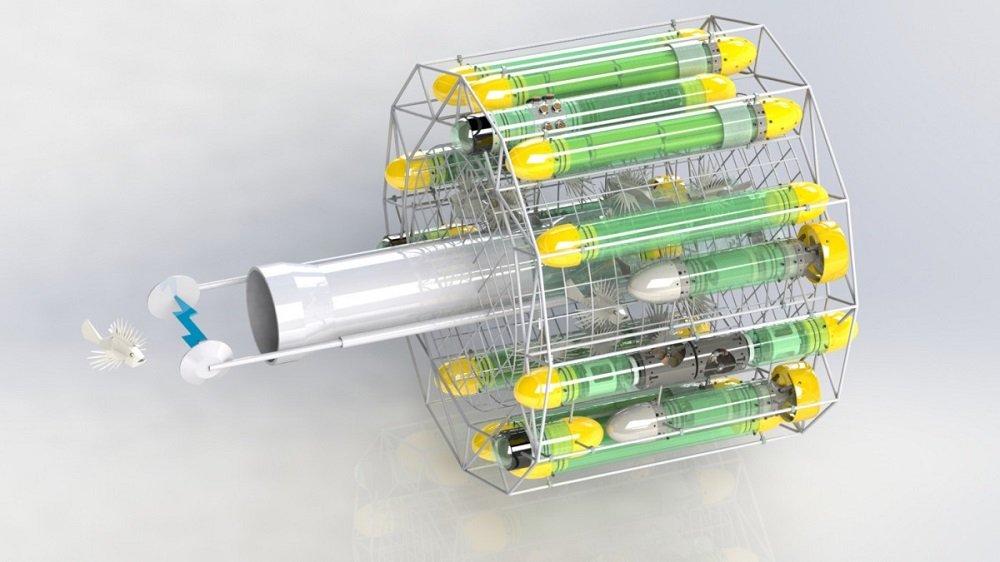
Inventors have now found a real practical use for killer robots. Yes, robots that are designed to kill. First thought would be that these robots will be designed to kill humans such as enemy soldiers or hardened criminals and terrorists, but there’s that question of morality, human rights and accountability when it comes to designing and building autonomous human-killing robots. The best use for killer robots now would be to kill aliens, more specifically invasive species of animals like the prolific lionfish.
“It’s a step in the right direction and using robotics for controlling lionfish is something we have had on our radar for a while… Getting this fish on people’s plates as a meal — that’s where I see the biggest bang for our buck,”
— Alex Bogdanoff, Marine Biologist, National Oceanic and Atmospheric Administration (NOAA)
Lionfish aren’t native to the Atlantic Coast and were likely introduced in the 1990s as aquarium escapees when Hurricane Andrew destroyed an aquarium in Florida. More were likely introduced by careless aquarium owners. They are now considered as one of the most aggressive invasive species on the planet. From their home in the Indo-Pacific waters, they have now spread through the coasts of the Mediterranean and the Caribbean. They have become the apex predators of the latter seas gorging themselves on the smaller native fish. Killing them means hunting them down via diving sorties or promoting them as food. But these efforts don’t seem fast enough as the lionfish continue to threaten the aquatic biodiversity of the invaded seas.
Enter RISE or Robots in the Service of the Environment. A non-profit company created by CEO Colin Angle of iRobot, the same guys that came up with the robotic Roomba vacuum cleaner. He came up with the concept when a conservationist suggested that a robot can be used to hunt and kill the lionfish. Instead of manpower and resource-intensive diving expeditions, conservationists can use robots to cull the lionfish population of target areas.
“Think of it as a video game… It will be a tethered device with a control mechanism that you drop into the water… You drive the ROV until you see the fish — a lot of the technology is in the cameras — then you drive the ROV onto the fish and press the trigger.”
— John Rizzi, RISE executive director
The robots are basically Remote Operated Vehicles (ROV) operated by a hunter above water. The robot has a pair of electrodes to electrocute the fish and a vacuum to suck them into a container. Lionfish tend to swim away and hide from human hunters but are unfazed by the strange visitors making it easy for hunters to shock and suck. The Lionfish population is estimated to be over a million individuals and thousands of these fish killers are needed to reclaim the waters. But how can RISE or environmentalists entice ordinary people to invest time, effort and money to hunt lionfish? By promoting them as a marketable food source or using their spines as jewelry and souvenirs. If marketed correctly, RISE aims to sell the robots at consumer-level prices to divers and fishermen.
“We’re chasing a million lionfish… We need thousands of devices, and they need to be reliable, inexpensive, and safe… By getting the economics right, we will give people the incentive to buy our device and kill some fish, sell them or eat them, and do it again… The best way to eliminate a species is if humans eat it.”
— John Rizzi, RISE executive director
As for any ethical concerns mentioned earlier, the process is humane, and the promotion of the lionfish as edible game solves the problem.
“Our first notion is to go after lionfish, but we see ourselves building an organization that will apply robotic technology to other environmental disasters,”
— John Rizzi, RISE executive director
RISE is currently designing and testing prototypes of the lionfish hunter. In the long run, the company sees itself as a solutions provider for environmental disasters and could design hunter robots for other invasive species like the crown-of-thorns starfish that destroys coral reefs; golden apple snails and large jellyfish blooms.
“If the robot is successful, it could have a major impact on our ability to manage the invasive lionfish population…By controlling lionfish densities, we can mitigate the negative impacts that these fish have on the biodiversity and health of our coral reef ecosystems.”
— Dr. Gretchen Goodbody-Gringley, Bermuda Institute of Ocean Sciences

